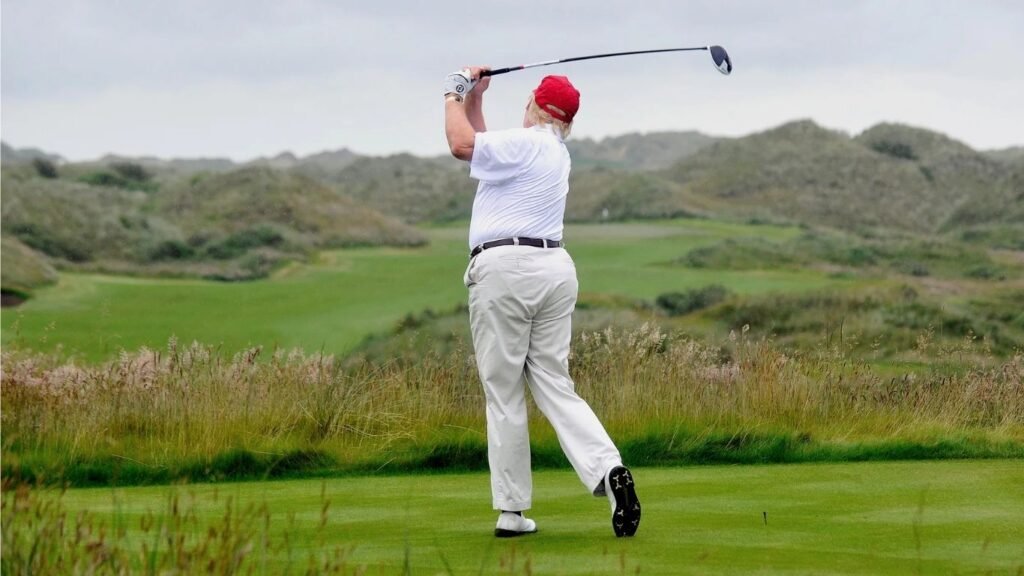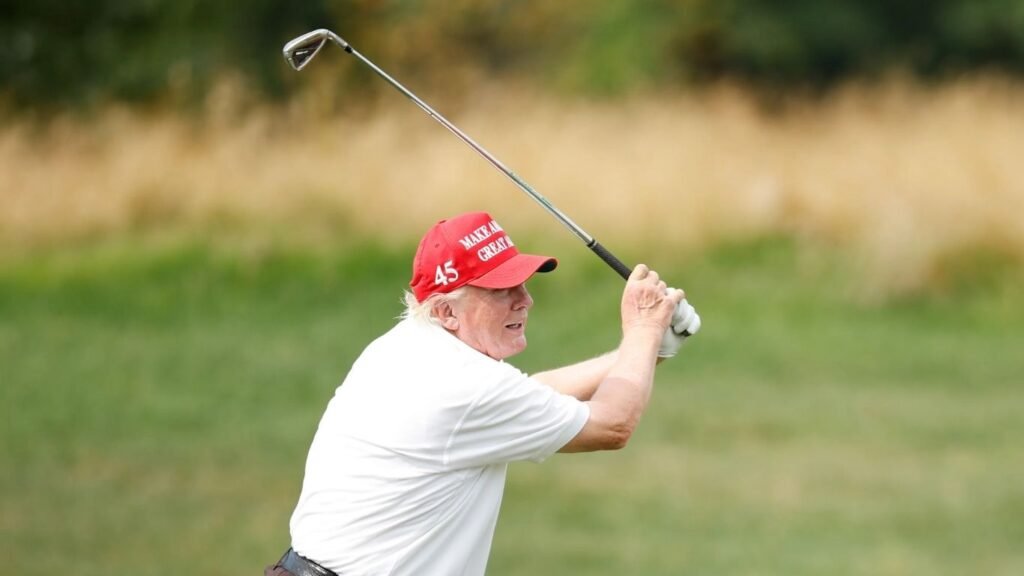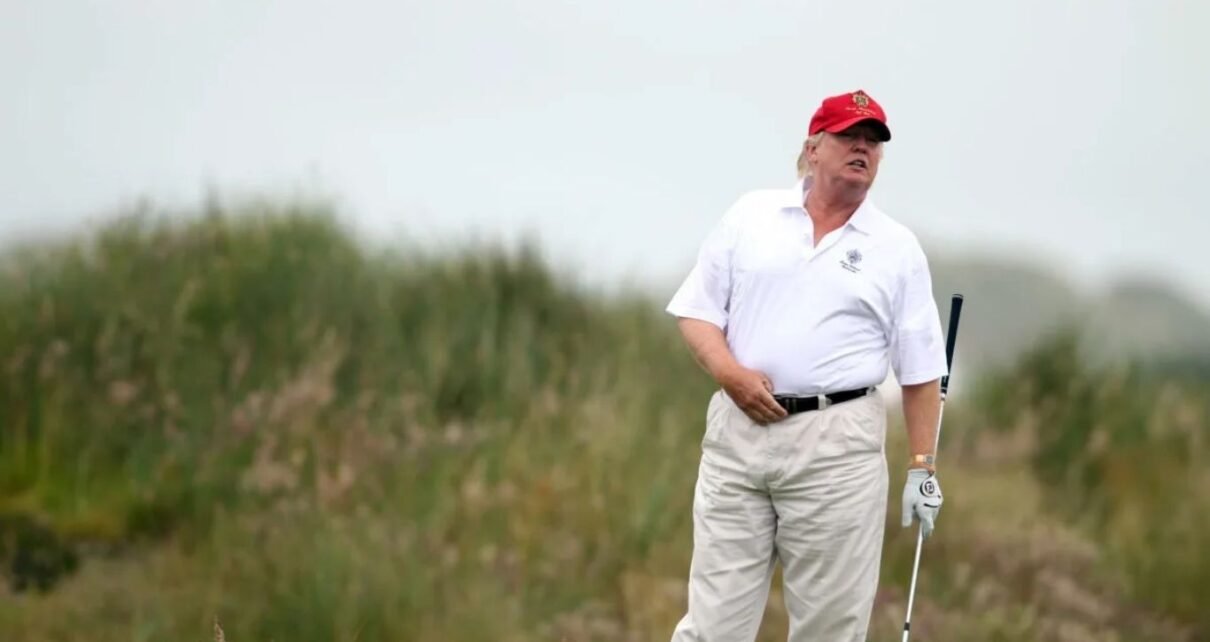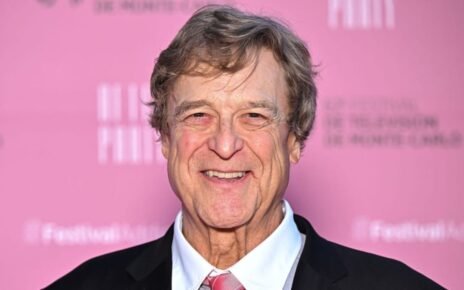Turnberry, Scotland | July 26, 2025 – Former U.S. President Donald Trump’s visit to Scotland took center stage this weekend, not only for his round of golf at the scenic Trump Turnberry resort but also for the massive, energetic protests that erupted across major Scottish cities. What was framed as a private trip filled with business meetings and personal leisure quickly turned into a national spectacle, showcasing a powerful contrast between presidential opulence and public outrage.
As Trump made headlines for playing golf in full view of media cameras, thousands of demonstrators filled the streets, their voices echoing across Edinburgh, Glasgow, and Aberdeen. The protests were a fusion of environmental, political, and human rights concerns, unified under a simple, bold message: “Trump is not welcome.”
Golf in the Spotlight: A Presidential Day on the Greens
Donald Trump began his Scottish visit with a leisurely game of golf at his iconic Turnberry resort on the Ayrshire coast. Clad in his signature white “USA” cap and windbreaker, Trump was joined by his son Eric and several business associates as they walked the immaculately manicured fairways of the Ailsa Course—one of the most picturesque in the United Kingdom.
Trump appeared in good spirits throughout the day, waving occasionally to onlookers and media from a distance. His love for golf is well-documented, and Turnberry holds special significance as a major part of the Trump Organization’s global portfolio. Despite facing mounting criticism at home and abroad, Trump described Turnberry as “the greatest golf course in the world” and expressed optimism about its economic impact in Scotland.
While the former president kept his focus on the fairway, events elsewhere told a much different story.

A Wave of Resistance: Scotland Takes to the Streets
As Trump enjoyed his round of golf, demonstrators poured into city centers throughout Scotland, many carrying banners with bold slogans like “No Red Carpet for Tyrants,” “Resist Trump,” and “Human Rights Over Profits.” Organized largely through grassroots campaigns and digital mobilization, the protests united various groups—from climate activists and immigration advocates to students and trade unionists.
In Edinburgh, the capital city, a coalition of organizations arranged a march that spanned nearly three kilometers through the heart of the city. The protest included music, dance, political chants, and dramatic visual performances. A notable moment came when a group of protesters dressed as characters from The Handmaid’s Tale staged a silent vigil outside the U.S. Consulate.
Glasgow saw equally passionate turnout. University students led the charge, marching from George Square to the city’s U.S. Consulate while waving rainbow flags, Palestinian solidarity symbols, and images condemning white nationalism.
In Aberdeen, where Trump’s second Scottish golf course is located, smaller groups gathered to express concerns over environmental degradation and local land disputes linked to Trump’s developments. Farmers and conservationists joined hands to decry what they called “economic colonization disguised as tourism.”

Police Presence and Public Order
Given Trump’s polarizing reputation, Police Scotland deployed extensive resources to ensure public safety and order. Sniper teams, road closures, and mounted patrols were in place around Turnberry, especially after social media calls encouraged protesters to march toward the resort. Officers created a secured perimeter several miles from the property, preventing any direct contact between demonstrators and Trump’s entourage.
In cities, law enforcement largely adopted a “facilitate and monitor” strategy, aiming to allow lawful protest while minimizing disruption. There were no major reports of violence, though a handful of arrests were made in Glasgow for disorderly conduct and vandalism. Protesters, however, praised the police for maintaining a peaceful atmosphere in most locations.
Political Reactions: Divisions in Government
Reactions to Trump’s visit—and the protests it triggered—were as divided as ever.
Scottish First Minister John Swinney released a cautious statement defending the right to peaceful protest while emphasizing Scotland’s ongoing diplomatic openness. “Scotland will never silence dissent,” he said, “but we also remain committed to engaging with all global partners.”
Prime Minister Keir Starmer, who recently signed a trade memorandum with the United States, came under fire from opposition MPs and protest groups for what they called “shameless appeasement” of a controversial figure. The trade agreement, which includes favorable tariff arrangements for certain U.K. exports, was viewed by critics as a political maneuver that overlooked human rights and environmental concerns in favor of short-term economic gains.
Across the aisle, Conservative MPs praised the visit as a symbol of growing transatlantic cooperation. “Whether you love him or hate him,” one MP commented, “Trump brings attention, and attention brings opportunity.”

Behind the Demonstrations: What Protesters Are Fighting For
Though Trump’s visit was the immediate trigger, demonstrators made clear that their grievances go beyond one man. Key protest themes included:
Climate Change and Environmental Policy
Trump’s legacy of withdrawing from the Paris Agreement and rolling back environmental protections in the U.S. continues to rile activists worldwide. His Scottish golf developments, particularly in sensitive coastal areas, have long been criticized for damaging natural habitats.
Immigration and Racial Equality
Protesters voiced outrage over Trump’s immigration policies during his presidency, including family separation at the border and travel bans targeting Muslim-majority countries. Chants of “No Borders, No Nations, Stop Deportations” were common across all demonstrations.
Support for Human Rights
From LGBTQ+ rights to reproductive freedom, many see Trump’s policies and judicial appointments as regressive. Activists called for solidarity with affected communities in both the U.S. and abroad.
Concerns Over Authoritarianism
Some groups labeled Trump’s leadership style as authoritarian, pointing to his handling of press freedom, protests, and electoral integrity. “Democracy is not golf,” read one sign, urging voters worldwide to guard against complacency.
A Divisive Legacy: Trump and Scotland
Trump’s relationship with Scotland is long and complex. His mother, Mary Anne MacLeod Trump, was born on the Isle of Lewis in the Outer Hebrides, giving him strong ancestral ties. Yet his real estate ventures, including the controversial Menie estate near Aberdeen, have not endeared him to many locals.
Critics accuse Trump of treating Scotland as a personal brand playground, often disregarding local laws and sentiments. At the same time, some towns have benefited economically from increased tourism, international media exposure, and job creation linked to his golf properties.
The Turnberry resort itself, a majestic seaside venue with historical prestige, has undergone major renovations under Trump’s ownership. But it remains mired in controversy over whether such investments reflect genuine contribution or self-promotion.
Public Sentiment: A Nation Divided
Not all Scots oppose Trump. Interviews with local residents revealed a mix of opinions:
- William Ferguson, 64, a retired engineer in Ayrshire, said: “I don’t agree with everything he says, but he’s good for business. Look at Turnberry—jobs, tourists, attention.”
- Louise MacGregor, 29, an environmental sciences student in Edinburgh, disagreed: “He’s the face of climate denial. We can’t celebrate someone who profits while ignoring the planet.”
- Hamza Qureshi, 41, a shop owner in Glasgow, added: “His rhetoric divides people. That’s dangerous in any democracy.”
The Global Stage: International Attention
Trump’s Scotland visit drew global media coverage, especially given the ongoing U.S. election season. International outlets highlighted the protests as a sign of global resistance to populist movements. Political analysts weighed in on how international optics might influence Trump’s standing among American voters.
Observers noted that Trump’s ability to generate massive attention—positive or negative—is unrivaled. Whether seen as a diplomatic power player or a disruptive force, he remains a central figure in global discourse.
Looking Ahead: What’s Next for Trump and Scotland
Trump is expected to remain in Scotland for a few more days, with possible visits to the Isle of Lewis and business meetings in Aberdeen. His itinerary remains mostly private, though security preparations suggest continued movement across regions.
Meanwhile, protest organizers have planned a “Festival of Resistance” near Aberdeen for the weekend, which could see another wave of nationwide demonstrations. Artists, musicians, and political speakers are slated to perform, transforming protest into celebration of civic engagement.
For Scotland, the debate around Trump’s presence may shape future policy around visits by controversial international figures. The question now is: how do nations balance diplomacy, dissent, and commercial opportunity?
Conclusion: A Moment That Defines More Than a Visit
Donald Trump’s golf game at Turnberry may have appeared peaceful and luxurious, but beyond the manicured lawns and fairways, a louder, more passionate story unfolded across Scotland. Thousands of people—young and old, rural and urban, conservative and progressive—joined together to voice their concerns about a figure who continues to leave a powerful mark on global politics.
The contrast between the former president’s relaxed demeanor and the determined energy of demonstrators reflected a larger truth: the world remains deeply divided about leadership, values, and the future we’re building.
And as Trump smiled for cameras on the green, the streets echoed with chants for justice, equality, and environmental protection—a powerful reminder that in modern politics, the people still have the loudest voice.


